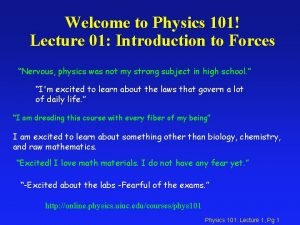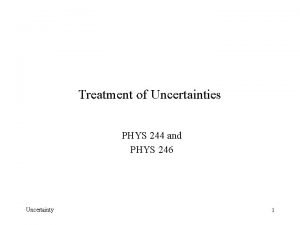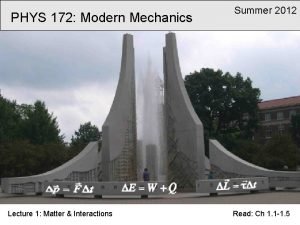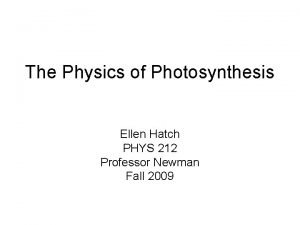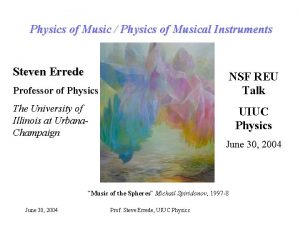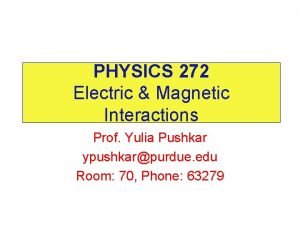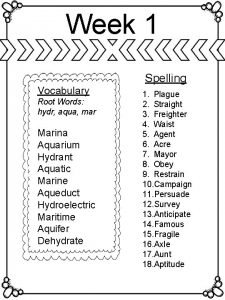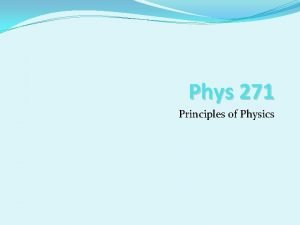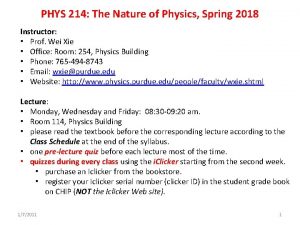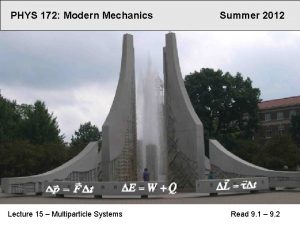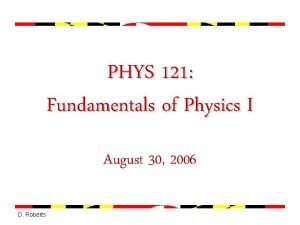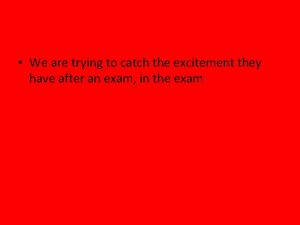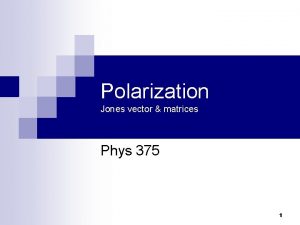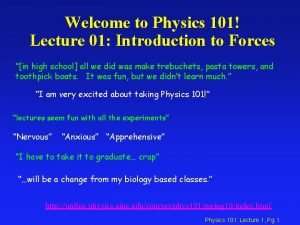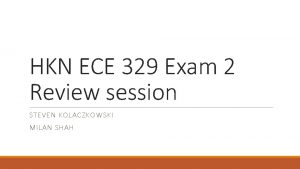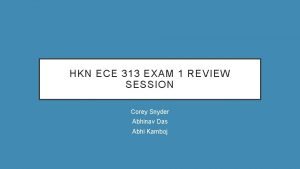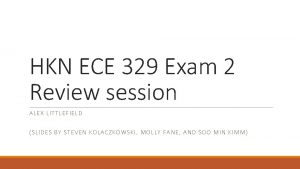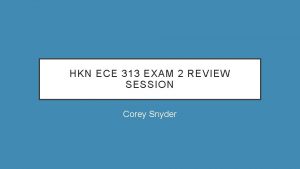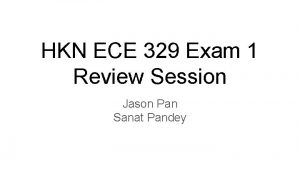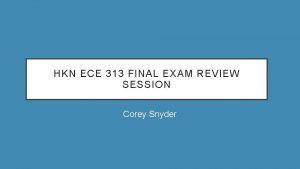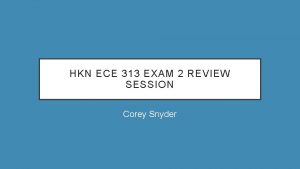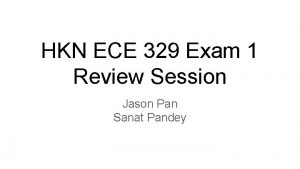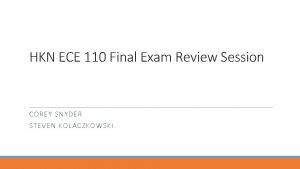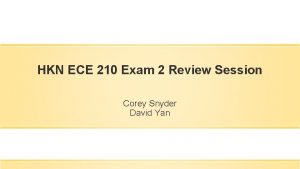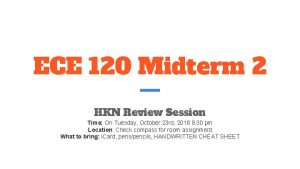PHYS 211 Exam 1 HKN Review Session STEVEN

































- Slides: 33

PHYS 211 Exam 1 HKN Review Session STEVEN KOLACZKOWSKI , YICHEN GU, VYOM THAKKAR, KESHAV HARISRIKANTH, XINYI GUO

1 D Kinematics

1 D Kinematics

Vector and 2 D/3 D Kinematics Vector A quantity that has both magnitude and direction Examples: displacement, velocity, acceleration Scalar A quantity that only has magnitude Examples: distance, speed, temperature

Vector and 2 D/3 D Kinematics

Relative Motion

Circular Motion

Force and Newton’s Law

Force and Newton’s Law

Force and Newton’s Law Types of forces Normal Force The force acting on an object when it’s in contact with the other one. The magnitude is not determinant. (i. e. It’s determined by the other conditions. ) The direction of the force is perpendicular to the surface of contact. Friction (Details covered later) Kinetic Friction The force that retards the motion of an object when it’s moving relative to a rough surface. Static Friction The force that keeps an object from moving when it’s static relative to a surface

Friction

Work and Energy

Work and Energy

Work and Energy

Center of Mass

Question

Hint Use superposition The acceleration can be decomposed into 2 parts, one along the ramp and the other perpendicular to the ramp.

Solution

Solution

Question A frictionless ramp with mass M and angle θ is at rest on the frictionless ground. Then, a wood with mass m is placed on the ramp so that the both blocks starts to move. What is the acceleration of the ramp?

Hint • All you need is to draw a free-body diagram and to use Newton’s laws! • The acceleration of the wood block and the ramp have the same magnitude in the direction perpendicular to the ramp. mg Mg

Solution mg Mg

Solution mg Mg

Question

Hint • Use Newton’s law for the initial and final condition. • Mechanical energy is conserved in the process.

Solution

Question

Hint How might this be similar to the previous ramp question? How might it be different? Do we expect it to take more, less, or the same force as lifting the box directly?

Solution The key concept at play is that the pulley is frictionless, and redirects the force you apply. It helps to draw a diagram to help you visualize the forces at play. The answer is B, as the pulley redirects your force the same regardless of angle, making it the same as lifting the object directly.

Question

Hint How does the force you apply “propagate” through the blocks? How many blocks does block 1 “move? ” Block 7?

Solution Block 1 applies enough force on block 2 such that all blocks 2 -7 move with the same acceleration. Meanwhile, block 7 applies force on block 8 such that block 8 moves with the same acceleration. You can think of it as block 1 “moving” 7 blocks while block 7 “moves” 1. As a result, the answer is 7/1=7, D.

 Hkn review session
Hkn review session Hkn review
Hkn review Ece120 wiki
Ece120 wiki Hkn uiuc review sessions
Hkn uiuc review sessions Hkn review session
Hkn review session Ece391
Ece391 Uiuc ece 313
Uiuc ece 313 Physics 211 exam 1
Physics 211 exam 1 Nur 211 final exam
Nur 211 final exam Uncontrollable spending ap gov
Uncontrollable spending ap gov Uiuc hkn
Uiuc hkn Manisha has secured 79 marks in the college
Manisha has secured 79 marks in the college![Hkn ]ds; Hkn ]ds;](data:image/svg+xml,%3Csvg%20xmlns=%22http://www.w3.org/2000/svg%22%20viewBox=%220%200%20200%20200%22%3E%3C/svg%3E) Hkn ]ds;
Hkn ]ds; Kapub
Kapub Uiuc physics 102
Uiuc physics 102 Phys 101 uiuc
Phys 101 uiuc Physics courses ucsd
Physics courses ucsd Calculating a percent difference
Calculating a percent difference Purdue physics 172 past exams
Purdue physics 172 past exams Charging by induction
Charging by induction Http //www.phys.hawaii.edu/ teb/optics/java/slitdiffr/
Http //www.phys.hawaii.edu/ teb/optics/java/slitdiffr/ Http //www.phys.hawaii.edu/ teb/optics/java/slitdiffr/
Http //www.phys.hawaii.edu/ teb/optics/java/slitdiffr/ Phys 212 equation sheet
Phys 212 equation sheet Phys 398 uiuc
Phys 398 uiuc Si units for charge
Si units for charge Define ostealgia
Define ostealgia Hosp root word
Hosp root word Phys 271
Phys 271 Phys 214
Phys 214 Particl clicker
Particl clicker Phys 121 umd
Phys 121 umd Phys 250 ubc
Phys 250 ubc Quarter wave plate jones matrix
Quarter wave plate jones matrix Phys 101 uiuc
Phys 101 uiuc
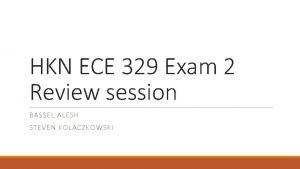
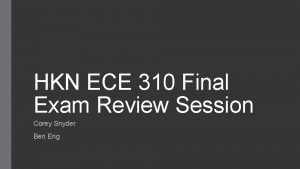

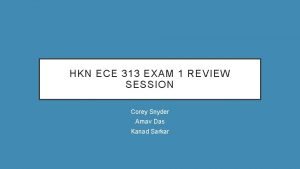


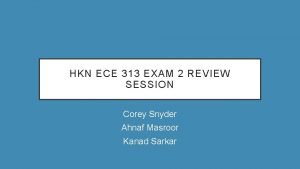
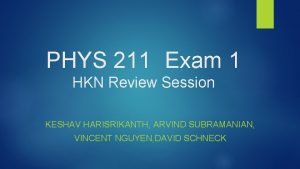




![Hkn ]ds; Hkn ]ds;](https://slidetodoc.com/wp-content/uploads/2020/12/3486362_ccd0d532001754d4165101283a392602-300x208.jpg)


